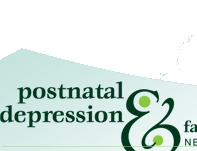
Mirtazapine
This section is designed to inform professionals.
(Consumers, see Fact Sheet on Mirtazapine)
Available as Remeron
- Centrally active antagonist at pre-synaptic á1 hetero- and auto-receptors, an action which is thought to increase central noradrenergic and serotonergic neurotransmission.
- Enhances serotonergic neurotransmission via 5-HT1 receptors, and blocks 5-HT2 and 5-HT3 receptors. (5-HT3 blockade is associated with anti-nausea properties.)
- Histamine H1-antagonist which is associated with sedative properties.
Uses:
- Indicated for use in depression.
- In New Zealand it is not yet funded but may become funded in 2009. If it becomes funded it is likely that to qualify for a full subsidy, 2 other antidepressants must have been trialled unsuccessfully and an application to Pharmac for Special Authority will probably be necessary.
Pregnancy
Category C
There is limited data available on the safety of Mirtazapine in pregnancy.
- There are case reports of 11 women in which Mirtazapine was used to treat depression or anxiety and Hyperemesis gravidarum (2,3,4). There were no major abnormalities; 1 woman had weight gain of 19kg and developed gestational diabetes; 1 infant developed Persistent Pulmonary Hypertension of the Newborn and required treatment in NICU for 3 days before being discharged healthy. There is no evidence that this was related to the Mirtazapine.
- A prospective, comparative, observational study followed 104 pregnancies in which the foetus was exposed to Mirtazapine, and compared them to a group who took other antidepressants and a group taking known non-teratogens 5. 95% of the women took Mirtazapine in the first trimester; 25% took it throughout pregnancy.
- There was no increase in the rate of major malformations. There was an increase in the rates of spontaneous abortions in the Mirtazapine group compared to women taking non-teratogens but it was not statistically significant (19% vs 10%). This was similar to rates in women taking other antidepressants (17%). There was also an increased risk of preterm births (before 37 weeks) compared to women taking non-teratogens (13% vs 2%).
- A UK study followed up 41 pregnant women who took Mirtazapine in the first trimester(6). There were 8 spontaneous abortions, 8 therapeutic abortions, 24 live births of which 4 were premature. 1 premature baby had a patent ductus arteriosus.
- Another study followed an additional 7 women who were exposed to Mirtazapine either alone or in combination with other drugs, during the first trimester(7). Duration of exposure varied from 1 to 11 weeks. All had healthy babies at term.
- It is unknown whether babies exposed to Mirtazapine towards the end of pregnancy are at risk of the neonatal adaption syndrome associated with the SSRIs. It is suggested that as a precaution, these babies are observed carefully in the post partum.
Lactation
Category L3
- There is data on 9 breastfeeding women who were being treated with Mirtazapine suggesting that Mirtazapine is safe in breastfeeding (8,9).
- The mean relative infant dose of 1.9% is below the national level of safety of < 10%
- There were no adverse drug-related effects in the babies and all were achieving developmental milestones. As a precaution, babies should be observed for sedation (10).
References
1. Remeron data sheet. http://www.medsafe.govt.nz/profs/datasheet/r/remerontab.htm
2. Saks et al. Treatment of depression, anxiety and hyperemesis gravidarum in the pregnant patient. A report of 7 cases. Arch Women Mental Health 2001:3 (4):165-70
3. Rodhe et al. Mirtazapine for treatment resistant hyperemesis gravidarum: rescue of a twin pregnancy. Arch Gynecol Obstet 2003;268 (3):219-21
4. Kesim et al. Mirtazapine use in 2 pregnant women: is it safe? [letter] Teratology 2002;66:204
5. Djulus et al. Exposure to mirtazapine during pregnancy: a prospective, comparatice study of birth outcomes. J Clin Psychiatry 2006;67:1280-4.
6. Biswas et al. The pharmacovigilance of Mirtazapine: results of a prescription event monitoring study on 13,554 patients in England. J Psychopharmacol 2003;17:121-6.
7. Yaris et al. Newer antidepressants in pregnancy: prospective outcome of a case series. Reproductive Toxicology 19 (2004)235-238.
8. Kristensen et al. Transfer of the antidepressant Mirtazapine into breast milk. Br J Clin Pharmacol 63:3 322-327
9. Aichorn et al. Mirtazapine and Breastfeeding. Am L Psychiatry 2004; 161:2325.
10. Hale T W. Medications and Mothers’ Milk. Hale Publishing 2006.
|






